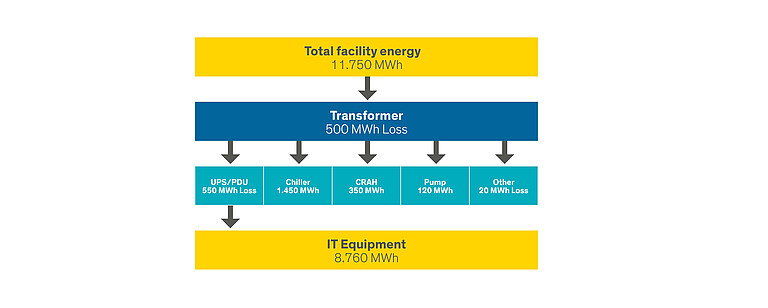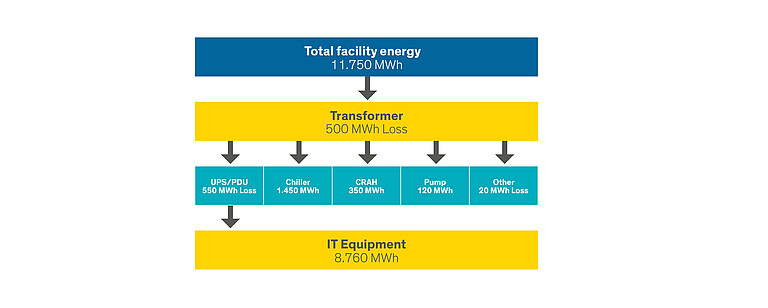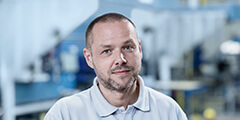PUE, the abbreviation for Power Usage Effectiveness, was developed back in 2007 by The Green Grid Association (www.thegreengrid.org). Since then it has been adopted by the industry around the world. A detailed explanation of PUE and pPUE has been published by ASHRAE in the book "PUETM: A Comprehensive Examination of the Metric".
Today, there seems to be a lot of misuse or misunderstanding of PUE and pPUE in the data center industry. This is my understanding of PUE and pPUE:
PUE
Power Usage Effectiveness is the relation between the total facility energy used to run a data center and the energy used to run the IT equipment as shown in figure 1. The total facility energy can be produced from different forms of energy, not necessarily 100% electricity.
The PUE should be an averaged value over the course of one year in order to consider the influence of the ambient temperature in an appropriate manner. The PUE is intended to be used to document the efficiency of an individual data center over time. The PUE should not be used to compare different data centers.
What PUE considers
- The efficiency of the power, cooling, and other infrastructure components and the form of the source energy are the major influencing factors for the PUE.
- The total facility energy used to run a data center can consist of electricity, natural gas, fuel (regular generator tests), or water for adiabatic cooling or district chilled water instead of using chillers. The different forms of source energy will then be weighted with defined weighting factors in the PUE formula.
- The location of the data center has an influence on the PUE. The colder the climate, the more economizer or free cooling can be used, the lower the energy consumption of the cooling system, and the lower (better) the PUE.
- The air temperatures used in the data center have an impact on the PUE as well. The higher the air temperatures, the more efficient the operation of the cooling system, the lower the energy consumption of the cooling system, and finally the lower (better) the PUE.
- The servers and other IT components themselves may operate highly efficiently or possibly with a very poor level of efficiency. The useful output, whatever it may be, may be produced very efficiently or inefficiently and this influences the PUE in a "negative" way. The more efficiently the servers work, the lower the energy consumption of the IT, and the higher (worse) the PUE. It may seem counterintuitive, but this is indeed the case.
What PUE does not consider
- The electricity used to run a data center might be produced by a nuclear plant, by burning coal, or by using renewable sources such as solar, wind, and water. The PUE does not consider if the electricity has been produced by renewable sources.
- Some data centers may reuse heat created during the cooling process. The PUE does not consider any energy reuse in the "energy balance". There are other metrics that consider this issue.
pPUE
The metric pPUE, partial power usage effectiveness, defines a certain portion of the overall PUE of a data center within a clearly defined boundary. In my example I have calculated the PUE and the pPUE for a transformer, UPS/PDU, chiller, CRAH, pump, and others to show how it is calculated and to show the differences in relation to the PUE.




